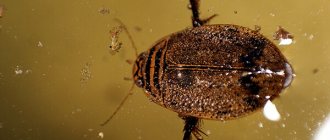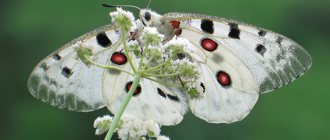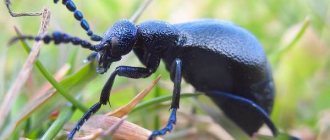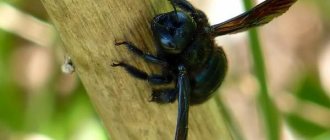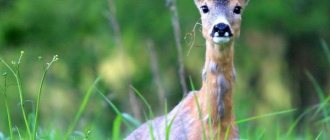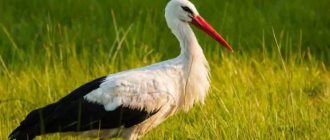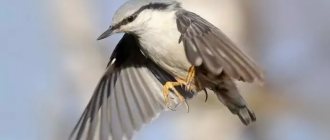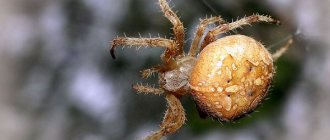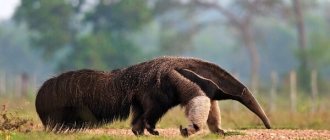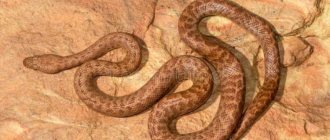The stag beetle is one of the largest insects found in Europe. It received this name due to its original appearance: on the insect’s head two large horns are visible, the spikes of which are turned inward.
The photo of the stag beetle clearly shows its peculiarity. Later in the article we will tell you more about this rare and very interesting beetle.
Origin of the species and description
Photo: Stag Beetle
Stag beetles are called Lucanus, which means “living in Lucania.” In their homeland they are used as amulets. Over time, this name was assigned to the entire genus, which today numbers more than fifty species. Only at the end of the nineteenth century did a more familiar name appear - “stag deer”, dictated by the extraordinary appearance of the animal.
The insect with unusual horns is the largest representative of beetles in Europe. It belongs to the Rogachi family. The insect's horns are quite massive and immediately stand out against the background of the body. You can see small spikes on their surface. The spikes have pointed ends that point inward.
Video: Stag beetle
The length of the male usually reaches eight centimeters, the female is half as long - on average, four centimeters. However, a real record holder was found not long ago in Turkey. Its length was ten centimeters. What are commonly called beetle horns are not actually horns. These are modified upper jaws.
They serve as a means of protection against natural enemies, as assistants in obtaining food, and as a real decoration of the species. Such jaws have a slightly reddish tint. They can even exceed the size of the entire body of the insect and in flight often outweigh the chest and abdomen. For this reason, beetles are forced to fly in an upright position.
Stag beetle (Lucanus cervus). Description, photo and video of the stag beetle
The stag beetle (Lucanus cervus) belongs to the phylum Arthropods, the class Insects, the genus Lucanus of the Staghorn family. It holds the palm in Central Europe, it is considered the largest beetle, males reach an average of 70-74 mm, and females 25-57 mm in length.
There is documentary evidence of a record body length, counting the “horns,” of a 95 mm male stag beetle caught in Europe.
It is found in oak forests and deciduous forests with an admixture of oak, artificial plantings - parks, gardens in Europe, Western Asia, Turkey, Iran and even North Africa.
It belongs to the species whose habitat is declining, and therefore has been listed since 1982 in the third appendix of the Berne Convention and in the Red Data Books of many European countries as a species declining in number.
The reasons that lead to a massive reduction in the stag beetle population are massive deforestation, primarily oak forests, clearing forests of rotten and rotten stumps and snags in which the larvae develop over the course of 6-7 years.
In recent years, there has also been an unlimited collection of beetles in collections, and natural predators of birds significantly reduce the population size by feeding on beetle larvae.
The color of the elytra is dark, violet-brown with reddish-brown enlarged mandibles, which form the so-called “deer antlers”. The elytra of beetles are not pubescent.
The stag beetle is characterized by sexual dimorphism: males are larger, their mandibles are better developed and much larger, the eyes are half divided by a buccal protrusion, and the upper lip is curved down.
Since the stag beetle belongs to the class Insects, its organs and organ systems have a similar structure in comparison with other representatives of this class.
The body and limbs of the stag beetle consists of segments - segments. The case itself is divided into three sections: head, chest, abdomen. In this case, the chest consists of 3 segments, and the abdomen - of 8.
The head, especially in the male, is greatly expanded. The antennae are geniculate, so the first antennal segment is larger than the others, and the 2nd segment is attached to it, moving slightly forward.
The antennae end with a club. The male's mandibles are very developed. Two teeth extend from the main trunk of each mandible. The color of the male mandibles can vary from bright red-brown to brown. After the death of an insect, the color of the mandibles always changes, they darken.
Walking legs (3 pairs) are located on the chest, so each pair of legs corresponds to one segment of the chest. The limbs themselves seem to be widely spaced.
Beetles are characterized by active movement at dusk; during the day they feed while sitting on trees and bushes. Their activity is also affected by temperature, wind and the presence of rain. In windy, rainy weather and at air temperatures below +16 °C, beetles do not fly.
According to the observations of scientists, males fly more often than females, although they are more massive than them. Thus, during flight, males try to stay almost vertical to compensate for their overweight mandibles. The flight itself is relatively fast and well controlled.
It is quite difficult for stag beetles to take off from a horizontal surface, so they mainly take off from tree trunks, developing sufficient lifting force.
Stag beetles feed on plant sap, mainly from oak trees, gathering in groups of several dozen individuals near wounds on the plant bark. They receive juice with the participation of the lower lip, which is shaped like tweezers. With the help of the oral apparatus, which has been transformed into jaws - horns, males cannot extract and grind food.
The beetle's digestive system begins with the mouth, which is located on the underside of the head. The resulting food enters the pharynx, then into the long esophagus. The esophagus has an extension - the goiter, from which food enters the chewing stomach.
Here the food is finally ground and enters the digestive stomach (midgut), where it is digested and absorbed under the influence of digestive juices. Undigested food enters the hindgut and is eliminated from the body through the anus, which is located at the end of the abdomen.
Beetles breathe atmospheric oxygen, which enters a system of spiracles located on the chest and abdomen of the insect. Then, from the spiracles, oxygen enters very thin respiratory tubes - tracheas, they envelop the organs, and oxygen directly and freely flows to them.
The circulatory system is not closed and has a fairly simple structure, since it only carries nutrients. The heart has the shape of a tube, which is divided into chambers with valve holes, located on the back. The muscles attached to them extend from the chambers to the sides, which contract and drive hemolymph into the aorta.
From the aorta, hemolymph flows into the spaces between the organs and fills them. Then the hemolymph is collected again in the heart through the chambers. Hemolymph is colorless and contains phagocytes and special blood cells. Its main function is transport, it is the transfer of nutrients to organs and tissues and the transfer of metabolic products to the excretory organs.
The functions of the beetle's excretory organs are performed by the Malpighian vessels and the fat body. Malpighian vessels are thin tubes blindly closed at the free end. They arise from the alimentary canal between the midgut and hindgut.
From the hemolymph, metabolic products enter the hindgut, from where they are excreted through the anus. Round nodules of uric acid are deposited in the fat body. The fat body is the beetle’s “storage buds,” since uric acid is not excreted from it.
The nervous system helps manage the complex processes of the entire body. The central nervous system consists of the brain, the ventral nerve cord, which runs along the ventral side of the body, and the peripharyngeal ganglion.
The brain consists of three sections. The peripharyngeal ganglion is well developed. Almost all of these sections secrete neurosecrets that are responsible for the growth and development of the insect.
A well-developed system of sensory organs helps the stag beetle navigate in space. So on the head of the beetle there are organs of touch, smell and vision. The organs of smell are the antennae, with their help the insect searches for food, sometimes flying distances of up to 3 km.
The organs of touch are the mandibles. The organs of vision are the compound eyes, which are located on the sides of the head. Such eyes consist of thousands of simple eyes and make it possible to see everything that happens around.
Stag beetles are dioecious insects that reproduce only sexually. The eggs in females are located in the ovaries, which are thin-walled tubes. The testes of males are white convoluted tubes containing seminal fluid. The mating process is preceded by fights for the female.
Males themselves are quite aggressive towards other males of their species, that is, intraspecific competition manifests itself. They can get into fights not only for females, but also for food. Most often, such fights occur when one male sits higher than the other.
Seeing each other, the males take a threatening pose - the front part of the body is raised up, and the antennae are spread wide apart. If this does not help, then the male begins an active attack on the enemy. At the same time, they “rear up”, rising up on their front and middle legs, opening their mandibles wide and rushing at each other.
Each of the males tries to hook and throw the enemy down with the help of their mandibles. Most often, the beetle that sits below wins such fights. During such skirmishes, they can cause damage to the elytra, piercing them with mandibles, and even damage the heads of rivals, but these injuries do not affect the life activity of the beetles. Beetles also often use their strong and developed mandibles for defensive purposes.
The female remains with the male who won, that is, remained on the tree. Mating of beetles most often occurs in trees. During this process, the male uses his mandibles to hold the female.
A short time after mating, females lay several dozen eggs, although until recently it was believed that there were almost 100 eggs in a stag beetle’s clutch. Before laying eggs, females prepare a laying site - chambers, which they gnaw out in old, rotten stumps and trees.
Each egg lies in a separate chamber. After the eggs are laid, the female dies. The eggs are quite large, 2.2 - 3 mm, oval in shape and yellowish in color.
The egg stage lasts 5-6 weeks (according to other sources, 2-4 weeks). A cream-colored larva emerges from the egg and is curved in a C-shape. By the end of its development, the larva reaches a size of 10-13.5 mm in length and a diameter of a human thumb. The head is very large and stands out noticeably, has a yellow-brown or yellow-red color and well-developed strong jaws.
The head capsule is highly sclerotized. There are also antennae on the head, the last segment of which is thinner than the penultimate one. The limbs are yellow-chestnut in color and equal in length.
With the help of their legs, the larvae can make chirping sounds, with the help of which they communicate with each other. On the sides of the larvae’s body, on each segment, there are large spiracles that are brownish-red in color.
The anus is triradiate, with a strongly developed longitudinal fissure. Anal sternite with numerous spine-like setae. The larvae develop only in dead wood, which is affected by white rot in the underground part of trunks, thick roots, old stumps, and less often in powerful branches. Moreover, the larvae do not touch living but diseased trees.
Thus, stag beetle larvae act as forest orderlies, feeding on the remains of dead wood from trunks or roots and taking part in soil formation. The development cycle of larvae is long, 4-6 years, but due to unfavorable climatic conditions it can be as long as 8 years. Climbing deep under the wood, the larvae survive at temperatures as low as -20 °C.
They are very susceptible to lack of moisture, and their growth and development slows down. Thus, larvae that develop in arid climate conditions are smaller than those that developed with sufficient moisture.
The next stage of development is the formation of the pupa. This process begins in October, in the so-called “cradle”, which is located in the ground at a depth of 15-20 cm. The pupae reach a length of 40-50 mm.
Already at the pupal stage, the male can be identified by its large tucked head and mandibles. The adult remains all winter in the cradle where pupation took place and emerges to the surface in late spring early summer, depending on the temperature.
Entomologists distinguish several forms that differ in the size of the mandibles in males and the shape and proportions of the pronotum. The emergence of various forms, that is, the phenomenon of polymorphism, is associated with the conditions in which the larvae develop, the quantity and availability of nutritious and accessible food, and environmental conditions.
The natural enemies of stag beetles are birds (magpie, raven, crow, owl, hobby beetles), which eat the abdomen of adult beetles, while throwing out the head and pronotum. Scolia larvae (Megascolia maculata) also parasitize stag beetle larvae.
An adult Scolia giant, having found a beetle larva, paralyzes it with a sting injection, after which it lays 1 egg on it. The Scolia larva emerges from the egg and feeds on the paralyzed living stag beetle larva.
Mentions of the stag beetle can be found in Pliny's Natural History. The author calls them Lucanus, that is, “the one who lives in Lucania,” an area that is located northeast of Pisa. The inhabitants of Lucania used these beetles as amulets and amulets. Therefore, later the entire genus of beetles received this name, and later Carl Lineus, describing the beetle in his book “Systema natur?”, gave the specific Latin epithet “cervus”, that is, “deer”.
Sophocles, Aristophanes, Nikandron, and Ovid also mention this beetle in their works. Many artists painted paintings with the stag beetle: Hans Hoffmann, Georg Flegel, Giovanni Garzoni. The image of the stag beetle can also be seen on coins and stamps.
The stag beetle even became the subject of a documentary film about the battle of two male stags for a female (1910 by V. A. Starevich). This species Lucanus cervus is the only one of the genus Lucanus that lives in the territories of Ukraine, Belarus and one of three species in the Russian Federation.
Scientists, fearing that stag beetles may disappear from our planet, are conducting experiments trying to speed up the process of degeneration of the pupa into an adult. So, they froze the beetle pupa and then placed it in a warm place, thereby repeating the temperature difference between winter and summer. These manipulations led to a faster “awakening” of the pupa.
Also, on the territory of states where this species is protected by law, entomological reserves are created in the territories of oak forests and other forests, the cutting of old oak forests is limited and individual old oak trees are protected. Conducting outreach work with young people.
In 2012, the states of Austria, Switzerland and Germany chose the stag beetle as insect of the year.
More interesting articles on the topic:
Common rhinoceros beetle (Oryctes nasicornis). Description, photos and videos of the rhinoceros beetle
The common rhinoceros beetle (Oryctes nasicornis) belongs to the phylum Arthropods, to
May beetle - description, metamorphosis, organs, structure with photos and videos
May beetles or May beetles (Melolontha hippocastani) belong to the phylum Arthropods, to
Appearance and features
Photo: Stag beetle Red Book
The stag deer is a fairly large insect. Its body consists of a belly, chest, and head. The belly is completely covered by elytra, and three pairs of legs are visible on the chest. The animal's eyes are located on the sides of its head. The body length can reach eighty-five millimeters including horns. It is the males that have these dimensions. Females are much smaller - their body length does not exceed fifty-seven millimeters.
Females are not only smaller, but they also look normal. They lack the main decoration - huge reddish horns. The legs, head, prodorsum, scutellum, and lower part of the entire body of the stag beetle are black. The combination of a black body with reddish horns makes the beetle unusually beautiful. It is difficult to confuse him with anyone else. Males use massive horns exclusively for fights with other representatives of insects, with other males.
Females lack such weapons, so they use their sharp jaws for defense. They are very powerful. The female can even bite through rough skin, for example, like on the fingers of an adult. Despite well-developed jaws, huge horns, and great physical strength, stag beetles do not eat food in a solid state. All these accessories are used only for defense in case of danger.
Description
The stag beetle is the largest beetle in Europe.
Its average length is 45-85 mm, sometimes specimens up to 100 mm in size are found. Females are much smaller than males and lack horny processes - mandibles. The body is large, flattened. Males have well-developed and enlarged mandibles that are red-brown in color. The elytra completely cover the abdomen. In males they are brown with a reddish tint, in females they are black-brown. The head, pronotum and abdomen are black.
Where does the stag beetle live?
Photo: Male stag beetle
The stag beetle is a common insect.
He lives in different parts of the world:
- in Europe - from Sweden to the Balkan Peninsula. But in some countries this animal species has become extinct. We are talking about Estonia, Denmark, Lithuania and most of the UK;
- in some hot countries - Asia, Turkey, North Africa, Iran;
- in Russia. This beetle is very widespread in the European part of the country. Local populations are observed in the Penza, Kursk, and Voronezh regions. In the north, beetles have been spotted in Samara, Pskov, Ryazan and many other regions;
- in Crimea. On the peninsula, stag beetles live in mountainous and forested areas;
- in Ukraine. Similar insects live almost throughout the entire territory of Ukraine. The largest population is observed in the Chernigov and Kharkov regions;
- In Kazakhstan, you can also often meet a handsome stag. Beetles live mainly in deciduous forests, forest-steppe and near the Ural River.
The geographic location of stag beetle populations is associated with its biotype. The insect belongs to the mesophilic species. Such animals prefer to settle in deciduous forests, mainly where oak trees grow. In this case, the type of site does not matter. Insects live in both lowland and mountainous areas. Only occasionally can the beetle be found in mixed forests and old parks.
In the Middle Ages, in some countries, particularly Great Britain, the discovery of a stag beetle was considered an omen. So, landowners believed that this insect foreshadowed the imminent death of the entire crop.
Conservation status of the stag beetle in Russia and other countries
The number of insects is rapidly declining. At the same time, the stag beetle population is low almost everywhere. In some countries the species is no longer found (Latvia, Denmark, Estonia). At the moment, the stag beetle is threatened with complete extinction.
In central European Russia, the insect population is extremely low and continues to decline. The species is included in the Red Book and belongs to category 2. Larger populations of this beetle can be found in Crimea. The species is also relatively common in the southern regions of Ukraine. The stag beetle is included in the Red Book of the following countries (belongs to category 2):
- Germany;
- Moldova;
- Poland;
- Sweden;
- Kazakhstan;
- Belarus;
- Ukraine.
The only possible conservation measure is to preserve in their original state the biotopes in which insects live, by creating entomological reserves in the territory of oak forests and other forests with an admixture of oak, limiting the cutting down of old oak forests and preserving individual old-growth oaks. In Russia, the species is protected in a number of nature reserves:
- Caucasian;
- Zhigulevsky;
- Voronezh;
- Forest on Vorskla;
- Central Black Earth;
- Bashkir.
In many European countries, various monitoring programs are being conducted to study the number and distribution of the stag beetle.
What does a stag beetle eat?
Photo: Stag Beetle
Powerful jaws, sharp horns, and physical strength allow the stag beetle to eat solid food. However, representatives of this species prefer to feed only on the sap of trees and other plants. However, to obtain such food you also need to try. Tree sap rarely flows out on its own. To get a portion of food, the stag beetle has to gnaw through the bark of trees with its powerful jaws. When the juice appears on the surface, the insect simply licks it off.
If there is not enough sap, the beetle moves to another tree or succulent plant. If there is enough food, the stag beetle begins to behave calmly. Its natural aggressiveness fades into the background and the insect grazes peacefully in the same area for some time. The stag deer is a real find for lovers of exotic things. Many people keep these insects at home. For feeding, use sugar syrup or an aqueous solution of honey.
Kinds
The described insects belong to the family of stag beetles. Its representatives are coleopterous beetles, which have mouth mandibles protruding far forward and equipped with teeth.
The family of stag beetles includes a whole genus of stag beetles that live in Europe (about two dozen of them are found in Russia alone) and North America, but most species were concentrated in the eastern and southern regions of the Asian continent. Let us describe some types of these horned creatures.
1. European stag beetle . Its range extends widely across the continent, spreading from Sweden in the north through the entire European territory to the south, all the way to Africa. And to the east it extends to the Urals. In this part of the world, this horned titan is the champion in size, which in males reaches up to 10 cm.
2. The giant stag beetle , being an inhabitant of North America, even exceeds its European counterpart in size, although only by a couple of centimeters. In other respects, it is similar to him, only the brown body color is somewhat lighter in tone. But, like most representatives of this genus, the females of such beetles are much smaller than their gentlemen and rarely grow more than 7 cm.
3. Wingless staghorn , settled in the Hawaiian archipelago, in particular on the island of Kauai, has many differences from the previous two species. Compared to them, his chewing was quite small. These are neat formations curved towards the center. They rather resemble cow horns rather than deer horns. These creatures are black in color. Their elytra are fused, which means they are not able to straighten them and fly. Moreover, the lower wings, although present, are too poorly developed.
4. North African stag . Compared to the European and American giants described above, it is small, but individual specimens of such insects are very beautiful, and therefore in demand among collectors. The so-called horns are not at all a prominent part of such beetles. But the color schemes of various parts of the body, creating unexpected contrasts, harmonize pleasantly.
5. The rainbow stag beetle is also surprisingly beautiful with its multi-colored tints. There are specimens of copper-red, sunny yellow, green and blue colors. And therefore, such pets are bred by nature lovers at home. The horns of these creatures are curved upward at the ends. Their homeland is Australia. The beetles usually do not exceed 4 cm in size, and there are also very small specimens, especially among the female half.
6. The Chinese stag has jaws in the form of two crescents looking at each other. The color of the beetle is black and shiny. Its head and chest are muscular, well developed and wider than the abdomen, ovally rounded at the end. This species has two subspecies, the difference of which lies in the degree of development of the mandibles.
7. The titanium beetle lives in the tropics and reaches a length of more than 10 cm. It is distinguished by a large head, comparable in size to the rest of the body. Its horns look like the ends of pliers.
8. Dybovsky's stag in our country lives in the Far East, and is also found in China and Korea. This beetle is not particularly impressive in size; on average, the length of males is about 5 cm. Its horns are figured and large. The most common color of the elytra is dark brown; yellowish hairs cover the body on top. The female half is painted in darker tones, up to charcoal black.
9. Grant's stag comes from South America. He is a very large representative of the stag family. Its mandibles resemble ring-shaped downward curved tusks covered with small teeth. They are so long that they are larger in size than the body of the insect itself. The front part of the beetle has a golden-green color with iridescence, and brown elytra are visible behind them.
Features of character and lifestyle
Photo: Stag beetle from the Red Book
You can spot an adult stag beetle as early as the end of May. Their population is especially large in places where oak trees grow. During the day, these animals are least active. They can sit peacefully on a tree all day, basking in the sun. Deer beetles come out in search of food at dusk.
Not all insects of this species adhere to a nocturnal lifestyle and feeding. Those who live in southern Europe prefer to be active during the day. At night they rest. During daylight hours, an insect can fly about three kilometers. Such distances are easily overcome by males. Females are less active and move little.
The flight of a stag beetle is hard to miss. They fly very hard and make a loud noise in the process. It is extremely rare for insects to take off from the ground or any other horizontal surface. For this reason, they have to fall from tree branches or bushes to take off. During the flight itself, males are forced to maintain an almost vertical position. This is due to the large size and impressive weight of the horns.
The character of the strong stag beetle is grumpy. However, aggressiveness is inherent only in males. Females do not show their aggression without reason. Males often organize competitions among themselves. The subject of the “dispute” can be food or a female. During the battle, rivals attack each other with powerful horns. With their help, they try to throw the enemy from the tree.
Despite the power of the beetles' horns, fights between males do not end fatally. The horns are not able to pierce the body of a stag beetle, they can only injure. The fight ends with one of the males being forced to give up food or a female to the other.
Nutrition
What a stag beetle eats primarily depends on its location. To feed it at home, it will be enough to give the insect a little sugar syrup, possibly with the addition of honey or juice.
Such food is as similar as possible to what the stag beetle eats in the wild, and this is mainly plant juice or young trees. He is also able to bite off young shoots for subsequent consumption of their juice.
Social structure and reproduction
Photo: Horned deer
In the social structure, the main leadership positions belong to males. Males can compete with each other in relation to the female or food.
The process of prolongation of the genus of stag beetles can be represented in stages:
- Attracting males. The female is puzzled by the continuation of the race. She looks for a suitable place on the tree, gnaws the bark to attract a male with sap. To emphasize her intentions, the female lays her feces right under the gnawed bark.
- The choice of the strongest. Females mate only with the strongest males. Many individuals flock to the sap of the tree. However, when they see feces, they forget about food and begin to compete with each other for the female. Some weak beetles are eliminated on their own. Only the bravest remain to fight.
- Pairing. The strongest is the one who can knock all competitors to the ground. After the victory, the male mates with the female, then flies off to do his own thing. Reproduction occurs sexually.
- Egg deposition. Soon after fertilization, the female lays eggs. To do this, she chooses dry stumps and trees. There the eggs develop over the course of a month.
- Larval stage. Stag beetle larvae can reach one centimeter in length. During their development, they feed on particles of dead wood.
- Transformation into a chrysalis. If the larva can come to the surface, then the pupa begins its development underground. The process usually begins in the fall and ends in the spring.
- Life of an adult beetle. In spring, the pupa turns into an adult, handsome stag. The lifespan of an adult usually does not exceed one month. But in nature there were also long-livers. Their active life span was two months.
How stag beetles use their horns
A pair of stags.
The main purpose of such huge mandibles is to fight with competitors for a female or for a source of food. Male stags are always very aggressive towards each other and, noticing a potential enemy on the horizon, they immediately rush to attack.
During the fight, males very often try to pick up their enemy with the help of mandibles and throw him out of the tree. In the fight for the female, the main goal is to turn the opponent onto his back.
Natural enemies of the stag beetle
Photo: Stag Beetle (stag beetle)
Stag beetles most often fight among themselves. Males have a warlike character and constantly engage in fights for the best food and females. However, such battles do not pose a serious threat to the animal. They end peacefully or with the slightest damage. Stag beetles are at their most defenseless at the larval stage. They cannot offer even the slightest resistance. The most dangerous enemy for the beetle during this period is the Scolia wasp. The Scolia wasp can completely paralyze a huge staghorn larva with just one sting. Wasps use the larval body to lay their own eggs.
Adult horned beetles suffer mainly from birds. They are attacked by crows, eagle owls, and owls. Birds feast only on their bellies. The remaining parts of the insect remain intact. However, the most dangerous enemy for stag beetles is humans. In many countries, these insects are hunted by exotic lovers and collectors. Collecting beetles leads to a significant decrease in their numbers and even extinction.
Life cycle
Mating of beetles occurs in early summer. After this, the female makes special chambers in the rotting wood and lays one light yellow oval egg there. During her short life, she manages to lay only about 20 of them. Egg development lasts 5-6 weeks. After which milky white larvae hatch. They are capable of making chirping sounds, probably for communication.
Most often, the larvae develop in the underground part of the trunks and roots of old oak stumps or other deciduous trees. They feed on dead wood, gnawing long passages. It takes 4 to 6 years before the larva turns into a pupa. Pupation occurs in October, and first the larva arranges a cradle for itself. After almost 3 months, young beetles appear, which, after overwintering in cradles, emerge to the surface in May - June.
Population and species status
Photo: Stag beetle from the Red Book
The stag beetle is an endangered species. The number of such insects is decreasing at a rapid rate every year.
This is influenced by many factors, most notably:
- poor environmental conditions. This problem is relevant for any continent. Air, water, land are highly polluted;
- uncontrolled forestry activities. Deforestation deprives horned beetles of their natural habitat, home and food;
- the presence of pesticides and other harmful pesticides in the soil. This factor affects the numbers of almost all insects;
- sabotage by humans. When you see a beautiful stag beetle, it’s hard to hold back your exclamations of admiration. Some people don't stop there. They catch insects for fun or for their own collection. In some countries, amulets are still made from stags, which are sold for a lot of money.
These and many other negative factors are very quickly reducing the stag population throughout the planet. Today this animal is endangered and is listed in the Red Book. And in 1982, the stag deer was included in the Berne Convention. To support an endangered species in some countries, the stag beetle has been chosen as insect of the year more than once.
Writing a report on a beetle
Often, secondary school students in biology classes are assigned to prepare a short report on the topic of some interesting variety of insects. Representatives of the Lucanus species are an excellent option for writing such a report; you just need to prepare original and easy-to-understand information for children. To do this, you need to familiarize yourself with the most interesting facts about the stag beetle for children, because few people know that:
- females of the species, not having developed mandibles, bite much stronger and more painfully than males;
- males move faster than females;
- It is very difficult for beetles to take off from a horizontal platform, so they prefer to take off in free flight from trees and other heights;
- before attacking the enemy, the male threatens him in every possible way, attacking him only if these threats do not produce the desired result;
- Outwardly, the mandibles of males resemble the claws of crustaceans, but they do not pose a serious threat to humans.
It is best to compose the text of the report according to plan, starting with the title and ending with the conclusion. The message itself should include only basic information about the insect. The speaker must talk about the habitat of the stag beetle, its nutrition and reproduction. It is worth mentioning the reasons why the insect had to be included in the Red Book, designating the most unfavorable regions for its existence.
It is advisable to take care of illustrations , supplementing the message with bright pictures that will clearly depict the beetle in different periods of life. If the report is made for the little ones, then you can print out coloring pages with the image of a stag on regular A-4 sheets, distributing them to everyone.
By coloring the insect at their own discretion or with a hint about how it should really look, kids will learn and remember the material much easier, and the time of the report will pass quickly and unnoticed for them. In addition, you can accompany your story with a video, broadcasting it on a white canvas using a projector, because then interest in the beetle will increase even more.
Stag beetles spend most of their lives as larvae
This species can live in larval form from 3 to 7 years. The larvae live in dead stumps and soil, feeding on dead wood and rotting leaves. The length of time a stag beetle spends in larval form depends on climatic conditions. The colder it is, the more time it will take for final formation. With the onset of sexual maturity, the stag beetle becomes an adult and finally gains its antlers. After this he lives only a few weeks. With the onset of cold weather, he dies.
Photo: RogerCossey General images/Flickr
More facts
- Stag beetles mate in trees, a process that takes about 3 hours. The female then lays two dozen eggs.
- The stag beetle is the largest compared to other similar insects, in some cases its length can reach 8 centimeters . This includes the horns, while the body is 3-5 cm .
- The main element of nutrition for stag beetles is tree sap, and throughout their lives they rarely consume anything other than it.
- Females are significantly smaller than males, and their body length can reach from 2 to 5 centimeters .
- The horns of males are more developed than those of females.
- The first cartoon featuring stag beetles fighting each other was shown in 1910.
- The stag beetle can attract lightning - this hypothesis was believed in the Middle Ages.
- Pliny was the first to characterize the stag beetle. He gave it the name “horned scarab” .
- After the wasps paralyze the insect, they lay their eggs in it, and are therefore considered enemies of stag beetles.
- In 1997, a small coin was issued in Poland with a depiction of a stag beetle.
- Beetles were used by the ancient Romans as a talisman that could protect against evil spirits. Jaws, which were small in size, were cut off, and amulets-necklaces were made from them, and they were worn not only by adults, but also by children.
- Females do not have large jaws, but at the same time they are sharper and more dangerous for people, since they can easily bite through even the roughest skin.
- Insects have a complex character, and most often it is this that becomes the cause of fights.
- The stag beetle was awarded the status of “beetle of the year” in Austria, Switzerland and Germany in 2012.
- One of the reasons for the extinction of these beetles is considered to be large-scale deforestation , the main habitat of the larvae.
- Among the dangers, the beetle should beware of attacks from magpies, crows, owls and eagle owls, which will not refuse to feast on its abdomen.
- When trying to breed an insect at home, you should be patient, since the larva develops for an extremely long time, up to 8 years . A reborn beetle doesn’t live long, so there’s not much point in this idea.
- There are 5 males per female , so it is not surprising that there are a large number of fights between the latter.
Phases of life
The active life of the stag beetle is very short - about a month. Although among them there are “long-livers” who lived up to two months of age. But preparation for adult life takes several years.
The larvae emerge from eggs laid by the female in the loose core of rotting trees two and a half months after laying. The insect will remain in this form for at least four, maximum eight years. This period depends on the humidity of the air: the drier it is, the longer the insect will stay in this phase.
The larvae continue to be in the tree, eating its rot. It is noteworthy that they can only live in dead, rotting trees. The length of the horns and body size of the future beetle directly depend on the quality of nutrition of the larva. The larva itself, depending on the duration of this stage, can grow to enormous sizes - up to thirteen centimeters in length. It is believed that the larvae are to some extent capable of communicating with each other. In any case, they make sounds that the human ear cannot detect.
When the larva is ready for rebirth, it digs itself a cave in the dust of its tree, showing some forethought - future males compact more space for themselves, leaving room for antlers. In the fall, the larva pupates to emerge in the spring in the body of a handsome stag beetle.
The female chooses a rotting tree and gnaws holes in its trunk in which she will lay eggs.
